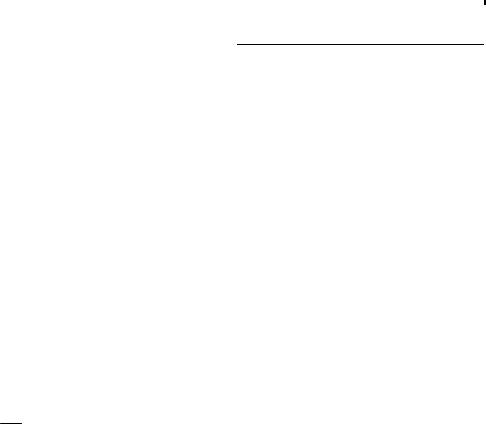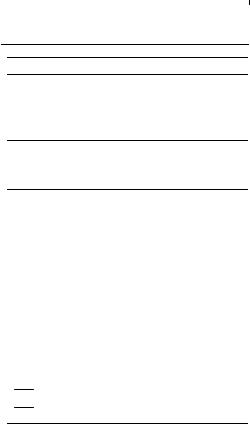ANALOG DEVICES AD5700, AD5700-1 Service Manual

Data Sheet
FEATURES
HART-compliant fully integrated FSK modem 1200 Hz and 2200 Hz sinusoidal shift frequencies 115 μA maximum supply current in receive mode Suitable for intrinsically safe applications Integrated receive band-pass filter
Minimal external components required
Clocking optimized for various system configurations Ultralow power crystal oscillator (60 μA maximum) External CMOS clock source
Precision internal oscillator (AD5700-1 only) Buffered HART output—extra drive capability 8 kV HBM ESD rating
2 V to 5.5 V power supply
1.71 V to 5.5 V interface −40°C to +125°C operation 4 mm × 4 mm LFCSP package
HART physical layer compliant UART interface
APPLICATIONS
Field transmitters
HART multiplexers
PLC and DCS analog I/O modules
HART network connectivity
Low Power HART Modem
AD5700/AD5700-1
GENERAL DESCRIPTION
The AD5700/AD5700-1 are single-chip solutions, designed and specified to operate as a HART® FSK half-duplex modem, complying with the HART physical layer requirements. The AD5700/AD5700-1 integrate all of the necessary filtering, signal detection, modulating, demodulating and signal generation functions, thus requiring few external components. The 0.5% precision internal oscillator on the AD5700-1 greatly reduces the board space requirements, making it ideal for line-powered applications in both master and slave configurations. The maximum supply current consumption is 115 μA, making the AD5700/ AD5700-1 an optimal choice for low power loop-powered applications. Transmit waveforms are phase continuous 1200 Hz and 2200 Hz sinusoids. The AD5700/AD5700-1 contain accurate carrier detect circuitry and use a standard UART interface.
Table 1. Related Products
Part No. |
Description |
|
|
AD5755-1 |
Quad-channel, 16-bit, serial input, 4 mA to 20 mA and |
|
voltage output DAC, dynamic power control, HART |
|
connectivity |
AD5421 |
16-bit, serial input, loop powered, 4 mA to 20 mA DAC |
AD5410/ |
Single-channel, 12-bit/16-bit, serial input, 4 mA to 20 mA |
AD5420 |
current source DACs |
AD5412/ |
Single-channel, 12-bit/16-bit, serial input, current |
AD5422 |
source and voltage output DACs |
|
|
FUNCTIONAL BLOCK DIAGRAM
|
REG_CAP |
CLKOUT XTAL1 XTAL2 |
XTAL_EN |
|
VCC |
|
|
IOVCC |
|
|
|
|
|
|
|
DUPLEX |
|
|
OSC |
|
AD5700/AD5700-1 |
|
|
CD |
|
FSK |
|
|
|
BUFFER |
|
|
LOGIC |
|
DAC |
|
|
HART_OUT |
|
|
MODULATOR |
|
|
||||
RXD |
|
|
|
|
|||
|
|
|
|
|
|
||
|
|
|
|
|
|
|
|
TXD |
CONTROL |
|
|
|
|
|
ADC_IP |
|
|
|
|
BAND-PASS |
|
||
|
FSK |
|
|
|
|
||
|
|
ADC |
|
FILTER AND |
HART_IN |
||
RTS |
DEMODULATOR |
|
|||||
|
|
|
|
|
BIASING |
|
|
CLK_CFG0 |
|
|
VOLTAGE |
|
|
|
|
|
|
|
REFERENCE |
|
|
|
|
CLK_CFG1 |
|
|
|
|
|
|
10435-001 |
|
RESET |
DGND |
REF |
REF_EN |
AGND |
FILTER_SEL |
|
Figure 1.
Rev. A
Information furnished by Analog Devices is believed to be accurate and reliable. However, no responsibilityisassumedbyAnalogDevicesforitsuse,norforanyinfringementsofpatentsorother rightsofthirdpartiesthatmayresultfromitsuse.Specificationssubjecttochangewithoutnotice.No license is granted by implication or otherwise under any patent or patent rights of Analog Devices. Trademarksandregisteredtrademarksarethepropertyoftheirrespectiveowners.
One Technology Way, P.O. Box 9106, Norwood, MA 02062-9106, U.S.A.
Tel: 781.329.4700 |
www.analog.com |
Fax: 781.461.3113 |
©2012 Analog Devices, Inc. All rights reserved. |

AD5700/AD5700-1 |
Data Sheet |
|
|
||
|
|
|
TABLE OF CONTENTS
Features .............................................................................................. |
1 |
Applications....................................................................................... |
1 |
General Description ......................................................................... |
1 |
Functional Block Diagram .............................................................. |
1 |
Revision History ............................................................................... |
2 |
Specifications..................................................................................... |
3 |
Timing Characteristics ................................................................ |
5 |
Absolute Maximum Ratings............................................................ |
6 |
Thermal Resistance ...................................................................... |
6 |
ESD Caution.................................................................................. |
6 |
Pin Configuration and Function Descriptions............................. |
7 |
Typical Performance Characteristics ............................................. |
9 |
Terminology .................................................................................... |
12 |
Theory of Operation ...................................................................... |
13 |
FSK Modulator ........................................................................... |
13 |
Connecting to HART_OUT ..................................................... |
14 |
FSK Demodulator ...................................................................... |
14 |
Connecting to HART_IN or ADC_IP .................................... |
14 |
Clock Configuration .................................................................. |
15 |
Power-Down Mode.................................................................... |
16 |
Full Duplex Operation............................................................... |
16 |
Applications Information .............................................................. |
17 |
Supply Decoupling ..................................................................... |
17 |
Typical Connection Diagrams.................................................. |
17 |
Outline Dimensions ....................................................................... |
20 |
Ordering Guide .......................................................................... |
20 |
REVISION HISTORY |
|
4/12—Rev. 0 to Rev. A |
|
Change to Transmit Impedance Parameter, RTS Low, Table 2 |
.. 4 |
Changes to Figure 3, Figure 4, Figure 5, and Figure 7................. |
9 |
Changes to Figure 10 and Figure 11............................................. |
10 |
Changed AD5755 to AD5755-1 Throughout ............................. |
17 |
Change to Figure 27 ....................................................................... |
18 |
2/12—Revision 0: Initial Version |
|
Rev. A | Page 2 of 20

Data Sheet |
AD5700/AD5700-1 |
|
|
SPECIFICATIONS
VCC = 2 V to 5.5 V, IOVCC = 1.71 V to 5.5 V, AGND = DGND, CLKOUT disabled, HART_OUT with 5 nF load, internal and external receive filter, internal reference, all specifications are from −40°C to +125°C and relate to both A and B models, unless otherwise noted.
Table 2.
Parameter1 |
Min |
Typ |
Max |
Unit |
POWER REQUIREMENTS2 |
|
|
|
|
VCC |
2 |
|
5.5 |
V |
IOVCC |
1.71 |
|
5.5 |
V |
VCC and IOVCC Current Consumption |
|
|
|
|
Demodulator |
|
86 |
115 |
μA |
|
|
|
179 |
μA |
|
|
69 |
97 |
μA |
|
|
|
157 |
μA |
|
|
|
260 |
μA |
Modulator |
|
124 |
140 |
μA |
|
|
|
193 |
μA |
|
|
73 |
96 |
μA |
|
|
|
153 |
μA |
|
|
|
270 |
μA |
Crystal Oscillator3 |
|
33 |
60 |
μA |
|
|
44 |
71 |
μA |
Internal Oscillator4 |
|
218 |
285 |
μA |
Power-Down Mode |
|
|
|
|
VCC and IOVCC Current Consumption |
|
16 |
35 |
μA |
|
|
|
75 |
μA |
INTERNAL VOLTAGE REFERENCE |
|
|
|
|
Internal Reference Voltage |
1.47 |
1.5 |
1.52 |
V |
Load Regulation |
|
18 |
|
ppm/μA |
OPTIONAL EXTERNAL VOLTAGE |
|
|
|
|
REFERENCE |
|
|
|
|
External Reference Input Voltage |
2.47 |
2.5 |
2.53 |
V |
External Reference Input Current |
|
|
|
|
Demodulator |
|
16 |
21 |
μA |
Modulator |
|
28 |
33 |
μA |
Internal Oscillator |
|
5.5 |
7 |
μA |
Power-Down |
|
4.6 |
8.6 |
μA |
DIGITAL INPUTS |
|
|
|
|
VIH, Input High Voltage |
0.7 × IOVCC |
|
|
V |
VIL, Input Low Voltage |
|
|
0.3 × IOVCC |
V |
Input Current |
−0.1 |
|
+0.1 |
μA |
Input Capacitance5 |
|
5 |
|
pF |
Test Conditions/Comments
B model, external clock, −40°C to +85°C B model, external clock, −40°C to +125°C
B model, external clock, −40°C to +85°C, external reference
B model, external clock, −40°C to +125 °C, external reference
A model, external clock, −40°C to +125°C B model, external clock, −40°C to +85°C B model, external clock, −40°C to +125°C
B model, external clock, −40°C to +85°C, external reference
B model, external clock, −40°C to +125°C, external reference
A model, external clock, −40°C to +125°C External crystal, 16 pF at XTAL1 and XTAL2 External crystal, 36 pF at XTAL1 and XTAL2 AD5700-1 only, external crystal not required RESET = REF_EN = DGND
Internal reference disabled, −40°C to +85°C Internal reference disabled, −40°C to +125°C
REF_EN = IOVCC to enable use of internal reference
Tested with 50 μA load
REF_EN = DGND to enable use of external reference, VCC = 2.7 V minimum
Current required by external reference in receive mode
Current required by external reference in transmit mode
Current required by external reference if using internal oscillator
Per pin
Rev. A | Page 3 of 20

AD5700/AD5700-1 |
Data Sheet |
|
|
||
|
|
|
Parameter1 |
Min |
Typ |
Max |
Unit |
DIGITAL OUTPUTS |
|
|
|
|
VOH, Output High Voltage |
IOVCC − 0.5 |
|
|
V |
VOL, Output Low Voltage |
|
|
0.4 |
V |
CD Assert6 |
85 |
100 |
110 |
mV p-p |
HART_IN INPUT5 |
|
|
|
|
Input Voltage Range |
0 |
|
REF |
V |
|
0 |
|
1.5 |
V |
HART_OUT OUTPUT |
|
|
|
|
Output Voltage |
459 |
493 |
505 |
mV p-p |
Mark Frequency7 |
|
1200 |
|
Hz |
Space Frequency7 |
|
2200 |
|
Hz |
Frequency Error |
−0.5 |
|
+0.5 |
% |
|
−1 |
|
+1 |
% |
Phase Continuity Error5 |
|
|
0 |
Degrees |
Maximum Load Current5 |
|
160 |
|
Ω |
Transmit Impedance |
|
7 |
|
Ω |
|
|
70 |
|
kΩ |
|
|
|
|
|
Test Conditions/Comments
External reference source
Internal reference enabled
AC-coupled (2.2 μF), measured at HART_OUT pin with 160 Ω load (worst-case load), see Figure 15 and Figure 16 for HART_OUT voltage vs. load
Internal oscillator Internal oscillator
Internal oscillator, −40°C to +85°C Internal oscillator, −40°C to +125°C
Worst-case load is 160 Ω, ac-coupled with 2.2 μF, see Figure 19 for recommended configuration if driving a resistive load
RTS low, at the HART_OUT pin
RTS high, at the HART_OUT pin
1 Temperature range: −40°C to +125°C; typical at 25°C.
2 Current consumption specifications are based on mean current values.
3The demodulator and modulator currents are specified using an external clock. If using an external crystal oscillator, the crystal oscillator current specification must be added to the corresponding VCC and IOVCC demodulator/modulator current specification to obtain the total supply current required in this mode.
4The demodulator and modulator currents are specified using an external clock. If using the internal oscillator, the internal oscillator current specification must be added to the corresponding VCC and IOVCC demodulator/modulator current specification to obtain the total supply current required in this mode.
5 Guaranteed by design and characterization, but not production tested.
6 Specification set assuming a sinusoidal input signal containing preamble characters at the input and an ideal external filter (see Figure 21). 7 If the internal oscillator is not used, frequency accuracy is dependent on the accuracy of the crystal or clock source used.
Rev. A | Page 4 of 20

Data Sheet |
AD5700/AD5700-1 |
|
|
TIMING CHARACTERISTICS
VCC = 2 V to 5.5 V, IOVCC = 1.71 V to 5.5 V, TMIN to TMAX, unless otherwise noted, 1 bit time = 1/1200 Hz = 833.333 μs.
Table 3.
Parameter1 |
Limit at TMIN, TMAX |
Unit |
Description |
||||||
t1 |
1 |
Bit time2 max |
Carrier start time. Time from |
|
|
|
falling edge to carrier reaching its first peak. See |
||
RTS |
|||||||||
|
|
|
Figure 3. |
||||||
t2 |
1 |
Bit time2 max |
|
|
|
||||
Carrier stop time. Time from |
RTS |
rising edge to carrier amplitude dropping to ac |
|||||||
|
|
|
zero. See Figure 4. |
||||||
t3 |
1 |
Bit time2 max |
|
||||||
Carrier decay time. Time from |
RTS |
rising edge to carrier amplitude dropping to ac |
|||||||
|
|
|
zero. See Figure 4. |
||||||
t4 |
6 |
Bit times2 max |
Carrier detect on. Time from carrier on to CD rising edge. See Figure 5. |
||||||
t5 |
6 |
Bit times2 max |
Carrier detect off. Time from carrier off to CD falling edge. See Figure 6. |
||||||
t6 |
10 |
Bit times2 max |
Carrier detect on when switching from transmit mode to receive mode in the |
||||||
|
|
|
presence of a constant valid carrier. Time from RTS rising edge to CD rising edge. |
||||||
|
|
|
See Figure 7. |
||||||
t7 |
2.1 |
ms typ |
Crystal oscillator power-up time. On application of a valid power supply voltage at |
||||||
|
|
|
VCC or on enabling of the oscillator via the XTAL_EN pin. Crystal load capacitors = |
||||||
|
|
|
8 pF. |
||||||
t8 |
6 |
ms typ |
Crystal oscillator power-up time. Crystal load capacitors = 18 pF. |
||||||
t9 |
25 |
μs typ |
Internal oscillator power-up time. On application of a valid power supply voltage |
||||||
|
|
|
at VCC or on enabling of the oscillator via the CLK_CFG0 and CLK_CFG1 pins. |
||||||
t10 |
10 |
ms typ |
Reference power-up time. |
||||||
t11 |
30 |
μs typ |
Transition time from power-down mode to normal operating mode (external |
||||||
|
|
|
clock source, external reference). |
||||||
|
|
|
|
|
|
|
|
|
|
1 Specifications apply to AD5700/AD5700-1 configured with internal or external receive filter. 2 Bit time is the length of time to transfer one bit of data.
Rev. A | Page 5 of 20

AD5700/AD5700-1 |
Data Sheet |
|
|
||
|
|
|
ABSOLUTE MAXIMUM RATINGS
TA = 25°C, unless otherwise noted.
Transient currents of up to 100 mA do not cause SCR latch-up.
Table 4.
Parameter |
Rating |
VCC to GND |
−0.3 V to +7 V |
IOVCC to GND |
−0.3 V to +7 V |
Digital Inputs to DGND |
−0.3 V to IOVCC + 0.3 V or |
|
+7 V (whichever is less) |
Digital Output to DGND |
−0.3 V to IOVCC + 0.3 V or |
|
+7 V (whichever is less) |
HART_OUT to AGND |
−0.3 V to +2.5 V |
HART_IN to AGND |
−0.3 V to VCC + 0.3 V or |
|
+7 V (whichever is less) |
ADC_IP |
−0.3 V to VCC + 0.3 V or |
|
+7 V (whichever is less) |
AGND to DGND |
−0.3 V to +0.3 V |
Operating Temperature Range (TA) |
|
Industrial |
−40°C to +125°C |
Storage Temperature Range |
−65°C to +150°C |
Junction Temperature (TJ MAX) |
150°C |
Power Dissipation |
(TJ MAX – TA)/θJA |
Lead Temperature, |
JEDEC industry standard |
Soldering |
J-STD-020 |
ESD |
|
Human Body Model |
8 kV |
(ANSI/ESDA/JEDEC JS-001-2010) |
|
Field Induced Charge Model |
1.5 kV |
(JEDEC JESD22_C101E) |
|
Machine Model |
400 V |
(ANSI/ESD S5.2-2009) |
|
|
|
Stresses above those listed under Absolute Maximum Ratings may cause permanent damage to the device. This is a stress rating only; functional operation of the device at these or any other conditions above those indicated in the operational section of this specification is not implied. Exposure to absolute maximum rating conditions for extended periods may affect device reliability.
THERMAL RESISTANCE
θJA is specified for the worst-case conditions, that is, a device soldered in a circuit board for surface-mount packages.
Table 5. Thermal Resistance
Package Type |
θJA |
θJC |
Unit |
|
|
|
|
24-Lead LFCSP |
30 |
3 |
°C/W |
|
|
|
|
ESD CAUTION
Rev. A | Page 6 of 20
